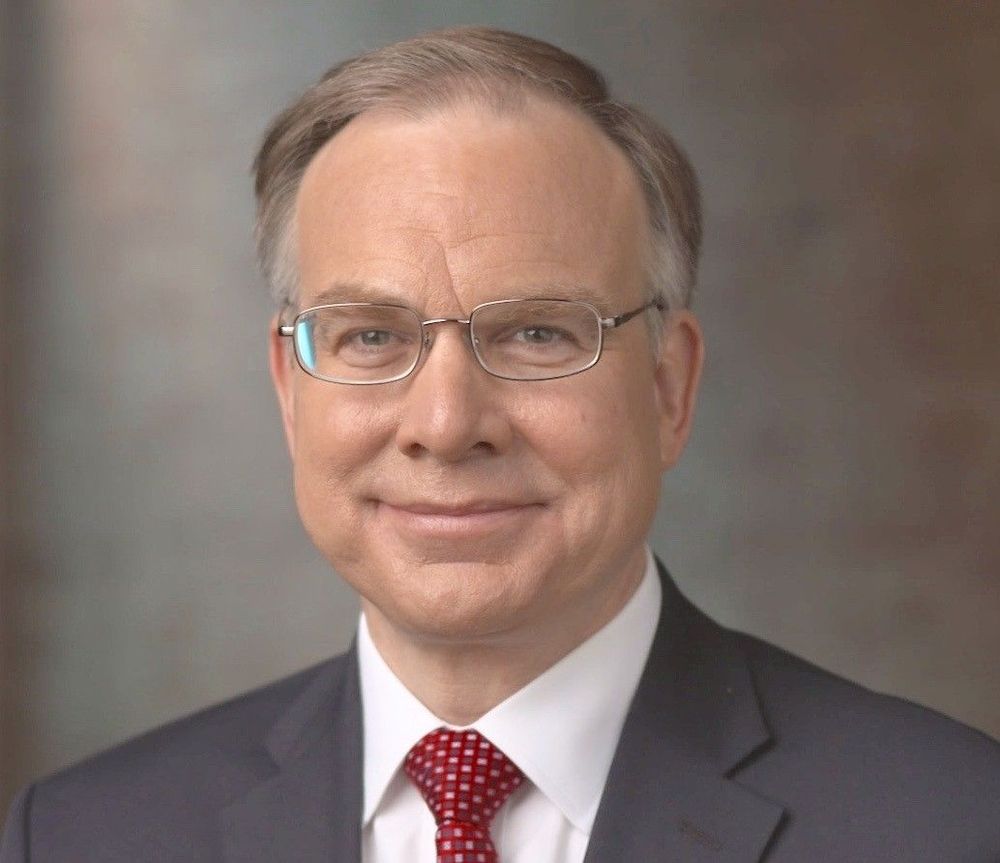Dear reader,
Welcome to the latest edition of The Forum File. In this edition, we are sharing our firms’ efforts to support Community Development Financial Institutions and local communities.
We hope you enjoy reading this edition and please do not hesitate to share your feedback.
Kevin Fromer, President and CEO, Financial Services Forum
Penny for Your Thoughts
Dan Letendre is the Head of CDFI Lending & Investing for Bank of America
We know that Bank of America has long been active in the CDFI and MDI space. Can you describe your capabilities there?
Bank of America has supported Community Development Financial Institutions (CDFI) for more than 25 years. We are currently the largest private investor in CDFIs, with $2 billion in loans, deposits, capital grants and equity investments across our over 250 CDFI partners.
CDFIs are typically non-profit loan funds, but they can also be mission-driven banks, including Minority Depositary Institutions (MDIs) and credit unions. They provide capital, mentoring and financial advice to support small businesses, affordable housing, fresh food supermarkets, healthcare centers and nonprofit organizations operating in lower income communities. We partner with them to fund projects that strengthen families, businesses, and entire communities in underserved areas throughout the U.S.
How do CDFIs work, and why is their work important?
CDFIs combine private sector capital from banks and other corporations with foundation grants and government support to make loans that larger banking institutions can’t make due to size, risk, or the need for intensive technical assistance. They expand economic opportunity in low-income communities by providing financial and technical assistance to support equitable and sustainable community development. There are more than 1,000 CDFIs certified by the Department of Treasury’s CDFI Fund, which was established as a bipartisan initiative in 1994 to promote economic revitalization and community development.
CDFIs help establish track records of lending using alternative underwriting standards or benchmarks (i.e., lower FICO scores or higher loan to value ratios) to borrowers so that traditional lenders can understand how these loans repay and can adequately assess the risk. The goal is for some types of lending incubated within CDFIs to become business as usual for banks once a successful loan performance history has been established.
What are some new developments in your work with CDFIs and MDIs?
We support a range of areas, including affordable housing, community development – such as health clinics, charter schools, and child-care facilities – small businesses, families, and individuals. Some areas of focus include:
- We announced in November that we are doubling our 2-year-old commitment to fund Veteran Loan Fund, a CDFI collaborative that provides financing and training for veterans starting small businesses. The consortium of 12 CDFIs has already funded more than 500 small businesses built by former military personnel that have created more than 3,000 jobs across 37 states.
- In 2023, we completed $40 million in funding to CDFIs to finance primary healthcare facilities in medically underserved communities across the United States.
- We have a long history of supporting clean energy initiatives through the work of CDFIs, including the Bank of America Energy Efficiency Finance Program for CDFIs that launched in 2011 to test different program models and financing structures to overcome barriers to making energy efficient improvements to various types of buildings. Additionally, we look forward to the deployment of the $27 billion Greenhouse Gas Reduction Fund, a national federal program created by the Inflation Reduction Act that will mobilize private capital to reduce emissions of greenhouse gases, particularly in low income and disadvantaged communities.
- We continue to support MDIs through $200 million in deposits to help them expand their capacity and facilitate lending, housing, neighborhood revitalization in minority and low/moderate-income communities. Deposits are needed by these institutions in order to leverage the equity capital provided two years ago by the U.S. government to help close the racial wealth gap.
- Our work includes supporting small businesses. Since 2021, our CDFI Locator portal has connected small businesses with over 250 CDFI partners nationwide. The portal provides a short-list of CDFIs based on size of the loan and location. We’ve expanded our Access to Capital Directory to benefit all small businesses using lessons learned from successful the launch in 2021 that initially focused on helping women-owned businesses in the U.S. navigate the capital landscape and identify potential sources of funding, such as equity, debt, and grants.
- Additionally, we invest equity capital in smaller, local funds with underrepresented owners seeking to themselves in diverse entrepreneurs to grow their businesses and drive economic opportunity in their communities. As of June 2023, we had committed more than $500 million in equity investments to more than 150 minority- and women-led funds in communities all around the country, more than doubling our initial $200 million commitment.
Value Add

How Bank of America Supports Communities Through Sports Partnerships
As part of Bank of America’s commitment to Responsible Growth, the company partners with a range of sports and entertainment properties to increase accessibility and drive charitable impact in the communities it serves. These sponsorships, which span across MLB, NFL, NBA, National Women’s Soccer League, golf and motorsports, as well as endurance running, film and more, serve as vehicles for generating economic impact and supporting communities where we live and work.
To bring this commitment to life, Bank of America’s Play It Forward Clinics provide youth with access to sports through a unique clinic format that pairs sports technique with life skills development. Prior clinics have included influential athletes across a range of sports, including Gleyber Torres, Jackie Joyner-Kersee, Muggsy Bogues, Dexter Fowler, Kevin Faulk and Megha Ganne. This work supports Bank of America’s dedication to addressing economic mobility across local communities.
Bank of America also utilizes sponsorships to drive economic and charitable impact in local communities. For example, the Bank of America Chicago Marathon alone generates more than $386 million in economic impact for the city of Chicago each year and runners raise tens of millions of dollars in charitable donations annually. Since 2002, the Chicago Marathon has raised more than $322 million in support of local, national, and global charities.
Looking ahead to the first year of a long-term partnership with the Boston Marathon and the Boston Athletic Association, Bank of America is committed to amplifying the extraordinary charitable impact generated by 30,000 runners who cross the iconic Boston Marathon finish line each spring.
Capital Gains
What we’re doing in Washington
In a BankThink piece in American Banker, Forum President and CEO Kevin Fromer wrote: “The nation’s largest banks are strong and they are essential to our economy. Higher capital requirements would do more harm than good,” he said. Read the full letter here.
In our latest blog post, Fromer urged policymakers to carefully consider the impacts Basel III Endgame would have on consumers, financial markets, and the economy in light of a discussion about buybacks and dividends. “The debate on the Basel III Endgame should stay focused on why excessive new capital requirements are being considered, and how they would harm Americans across our economy,” Fromer said. “Shifting the discussion to irrelevant topics does nothing to further our understanding of the likely cost of proposed capital increases.”
The Forum submitted a comment letter on the Basel III Endgame proposal to the Federal Reserve Board, Federal Deposit Insurance Corporation, and the Office of the Comptroller of the Currency. Read the key takeaways here.
In addition, the Forum submitted comment letters responding to proposals on updates to the GSIB surcharge and Long-Term Debt Requirements.
Following a speech by the Federal Reserve Board Vice Chair for Supervision, Forum CEO Kevin Fromer issued a statement on the excessive cost of proposed capital requirements.
The Forum highlighted concerns that have been raised by individuals and organizations on the Basel III Endgame proposal.
Our Two Cents
Research from the Forum
Analysis found that capital requirements for the largest U.S. banks would increase by 30 percent following the implementation of the Basel III Endgame rule. “These capital and risk-weighted asset increases are markedly higher than those provided in the proposal, demonstrating that the agencies have materially underestimated the proposal’s impact,” said the Forum, American Bankers Association, Bank Policy Institute, and SIFMA in a joint letter to banking regulators.
Checking the Balance
Bank of America launched CashPro Insights, a digital tool that analyzes information flowing through the firm’s CashPro platform and presents clients with insights that empower them to make more informed treasury decisions and drive cost saving efficiencies. CashPro is a digital banking platform accessed by more than 40,000 corporate and commercial clients around the world to manage their treasury, trade and credit operations and perform self-service requests.
BNY Mellon was named one of the most admired companies in the world by FORTUNE magazine for 2024. BNY Mellon performed best in “People Management” and “Innovation.”
Citi announced that the firm will donate over $6.6 million in support of education-focused non-profit organizations as part of its “e for education” campaign. The selected non-profit organizations focus on tackling childhood illiteracy and improving access to quality education, such as Fallen Patriots, an organization dedicated to educating children who have lost a parent in the U.S. military.
JPMorgan Chase, alongside partners Greater Washington Partnership and Education Strategy Group, announced the Talent Ready 2.0 initiative, a collaborative effort between employers and educational institutions to accelerate high school students across the D.C., Maryland and Virginia region on a path to great careers. This $5.3 million investment expands on JPMorgan Chase’s ongoing commitment to the region and its efforts to help more people, particularly those from underserved backgrounds, enter the workforce and compete for quality careers.
Goldman Sachs’ Urban Investment Group partnered with KeyBank Community Development Lending and Investment and provided a $200 million construction loan for the planned renovation of affordable housing for seniors in Rochester, New York. The capital investment will have a significant impact within underserved communities living in downtown Rochester.
Morgan Staney’s at Work platform announced a series of technology enhancements that drive increased efficiency across a widening ecosystem of workplace benefits solutions for equity, compensation, retirement, deferred compensation, executive services, saving and giving, and financial wellness.
State Street announced the issuance of $1.5 billion of depositary shares, with two diverse firms acting as co-managers on the transaction. The offering was structured in keeping with the firm’s inclusion, diversity, and equity efforts and represents State Street’s eleventh consecutive offering with diverse underwriters.
Wells Fargo granted $750,000 to fuel veteran-led humanitarian organization Team Rubicon’s TRades Academy, a program designed to provide trainees with trade skills to use within their own communities. With the TRades Academy, Wells Fargo will address the need for contractors in communities nationwide to repair homes and small businesses impacted by natural disasters.
